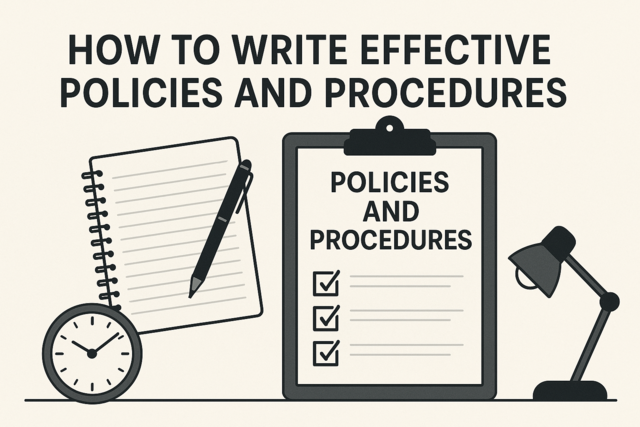Effective Public Speaking
The idea of public speaking often evokes a great deal of anxiety in every human being. When asked what your biggest fear is, public speaking is at the top of many people's list. This can often stem from many of the components discussed in the "social anxiety" in which a natural human desire is to be accepted by those around them. However, even with the natural anxiety that comes with public speaking there are many strategies which can help minimize the anxiety felt when perform public speaking, as well as enhance your overall skills in public speaking.
Public speaking is performed in multiple forums. People perform public speaking in educational settings, for course projects, or on the other end as the teacher or professor. In other workplaces, many leaders of projects might have to present their work periodically throughout the project. In other situations, people in politics use public speaking almost every day. Even those in community based agencies or non-profits will encounter public speaking as they hold group discussion or community forums. Public speaking is often associated with a large amount of people that fill an auditorium; however, public speaking also applies to a small group of people. You might be in a meeting with two other people, but you need to stand in front of those two people and present information; you are public speaking. Public speaking is anything you do in front of two or more people in presenting information. The point is you are in front of an audience (no matter the size of the audience), the attention in the room is on you and you are verbally providing information.
There are numerous tips and strategies for mastering public speaking. However, the most important practice that will lay the most solid foundation to any public speaking experience is to prepare. This point of preparing yourself cannot be overstated. The more you prepare a presentation or the talking points you will discuss the less anxiety you will feel while you are publicly speaking. This reduced anxiety occurs because as you prepare, the more confident you become in the information or content you are speaking about. Preparing for public speaking involves in itself multiple practices. As soon as you learn that you will be performing some form of public speaking, a helpful practice is to establish a timeline of preparing your presentation or preparing your talking points. This timeline should consist of creating an outline for the presentation of talking point. Start with general themes of the topic and then create sub-categories. Gather all the information you can by doing your research. Research might involve reading studies on a certain topic, interviewing others to gain more in depth understanding, or pulling together resources and information to be able to pass along. As you gather the needed information and details about your topic, you can structure your outline to develop your plan. This will be vital in preparing for talking in front of your audience. This leads to an important point to remember as you develop your guiding outline; identify and know your audience. You will want to keep your audience engaged throughout the entire time you are talking. In order to do this, you must know who you are speaking to. In knowing your audience, you can tailor the content you discuss. For example, if the audience are other professionals in the topic you are discussing, you can most likely leave out all the basic information you might begin with if you were speaking to a group of non-experts. Ask yourself, "Who is my audience, and what will they want to know most?" This question can guide the way you develop your outline and gather your information and research.
A helpful rule of thumb as you decide what to include in your talking points and what to leave out is; if it is boring to you, it will be boring to your audience. Your own feelings towards a topic will show through to some extent. If you feel bored talking about it, it will be difficult to engage any sort of audience. So as you are forming your outline and plan, consistently ask yourself, "Why does this matter to me and to my audience?" If the information matters to you and feels important, you will convey more meaning as you speak.
After you have a thorough outline prepared, the next step is to read through your outline as if you were in the shoes of your audience. This is another reason why knowing your audience will be vital. This can also be challenging skill to develop because it involves stepping outside of your own lens, especially after being so absorbed in the information of a topic, it is hard to see outside the box. However, it is incredibly powerful skill to develop because it will allow you to know what your audience will ask before they ask it. This will help prepare you even more as you enter into public speaking. Since much anxiety comes from the concern you will not know what to say, this is why questions can be very nerve wracking. The more you can think in the shoes of the audience to anticipate their questions, the more prepared you will feel.
The next point you will need to consider as you rehearse and look over your guiding outline is timing. For any public speaking engagement, you will be allotted a certain amount of time to speak. This will be very important to consider because if your speaking is too short, it may give the impression that you are underprepared; however, if you speak too long, you are likely to lose the interest of your audience. Therefore, it is a balancing act as you work to structure the timing of your speaking. A helpful strategy is to use the categories your divided your topic into and assign a certain amount of time to each category. The next step will be to rehearse, rehearse, rehearse! Rehearsing your speech or presentation will allow you to make sure you can say what you need to say in the amount of time you have to speak. Rehearsing means you will actually say out loud what you plan to say in the actually speech or presentation. As you rehearse, take note of the areas in your guiding outline that you are getting held up at. Is there a certain part you seem to be fumbling over, or sense an increase in anxiety as you talk about it? This could be an indicator that you do not know enough about that particular part of the topic. If this is the case, do more research and try to prepare learn more about that sub-category of your topic. After rehearsing out loud by yourself, the next helpful tip is to rehearse in front of someone you are comfortable with. Have this person give your their immediate impression of your speech or presentation and allow them to provide you feedback.
Another important component to mastering public speaking is learning strategies for maintaing your audience's engagement and interest. This is done in one way by effectively using your time as discussed above. Another helpful tip for engaging your audience is to implement some stories or humor into your speech or presentation. Depending on the forum for the public speaking, you will want to use your common sense judgment to decide what sort of humor or stories are appropriate. However, using some varying degree of humor or stories to evoke emotion can be powerful in engaging your audience, as well as leaving a lasting impression. It can be effective to start your entire speech or presentation off with a story. It is like reading a book, when the author uses something that hooks you from the beginning. This often involves some sort of emotion, so have your story evoke an emotion. You won't want to be too extreme with evoking emotion as you also want to ensure you can get through your presentation or talk, but some emotion will make the audience feel connected to you and they will want to hear what you have to say.
Another way to keep your speech or presentation meaningful to the audience is to be very clear in explaining why what you are saying is important. Often the point of public speaking is to persuade a group of people, to present information, to demonstrate work you have done, or to encourage or rally people together for a cause. In each of these cases, you will want to convey why your points are important. This does not have to be an area you beat around the bush with, rather should be conveyed clearly to the audience. Let them know exactly why what you are saying is important. This is what is called the main take home message. This is the one thought that, out of the entire speech or presentation, you would want your audience to remember long after you are done talking. It is helpful to state this take home message in the beginning, as well as the end. This way you are clear from the beginning what your most important message is and you also leave your audience with the one thought you hope they take away.
Now you are about to give your speech or presentation in front of the live group of people. Many have experienced the butterflies right before standing up in front of the room of people, or moving to the front of the lecture hall, or stage of an auditorium. You immediately feel a heat wave take over your face and body, you may begin to tremble, and have trouble catching your breath. It is in this very moment that the best strategy you can implement is to perform 3 deep breaths in which you count to 5 for each inhale and each exhale. This will help settle the tension in your body. Once you complete these 3 deep breaths, immediately move into the space you will speak from. This allows for no time to let the anxiety flood back into your body or mind. Once you are in the space you will speak, it can be helpful to choose 3 areas in the room that you will focus on. Try to choose one on your left, one in the middle, and one to the right of the space you are speaking from. If you know someone in the audience in these 3 areas, it is a helpful strategy to look directly at them, as you may feel comfortable with them. Otherwise, choose 3 neutral locations to focus on. As you practice these public speaking skills, and feel more confident, making eye contact with people in the room can be the next skill you work to master. However, if you are someone who experiences more intense anxiety with public speaking, choosing 3 neutral locations can help you to avoid seeing people's reactions or facial expressions, which can at times impact your ability to move through your speech. As you get more comfortable speaking, it can be powerful to make eye contact with a few people in your audience as this can help to leave a lasting impression. If you are already speaking in front of a smaller group of people, it may be beneficial from the start to make eye contact with those in the room. Most people nod along as they listen to people speak in front of them. This is natural as people will want to show they are listening (even if they are not always). This nodding can actually work in your own favor, as it can feel reinforcing and help boost your confidence.
In regard to audience members nodding, if you are in a smaller public speaking forum, it can be a helpful strategy to make your speech or presentation interactive. In this sense, you can use part of your time to facilitate a discussion or to ask your audience questions. This is a great tip when you may not have been able to prepare as much as you would have liked because it takes some spot light off of you, yet it also keeps your audience engaged. If you are using a discussion facilitation strategy in a smaller group, it is helpful to think about the situation in which no one in your audience responds to your question. This scenario may be familiar. When you are in a class or presentation and the speaker poses a question in which everyone then sits in silence. This will depend on the dynamics of the group, some groups are shy, while others can be much more talkative. If you find yourself with a quieter group, it can be a useful strategy to direct your audience to speak with the person next to them about the question you posed and to then have each smaller group share with the larger group.
Overall, the above strategies take you through a timeline of public speaking. With skills to enhance your ability to prepare and rehearse, you will establish a foundation for entering into your public speaking forum. Then by implementing some of the strategies to handle any situation that might arise as you give your speech or presentation, you will with each public speaking engagement come out with increased confidence. This will allow you to build each time on top of that confidence until you are able to start to add your own personality and flare to any speech or presentation.























